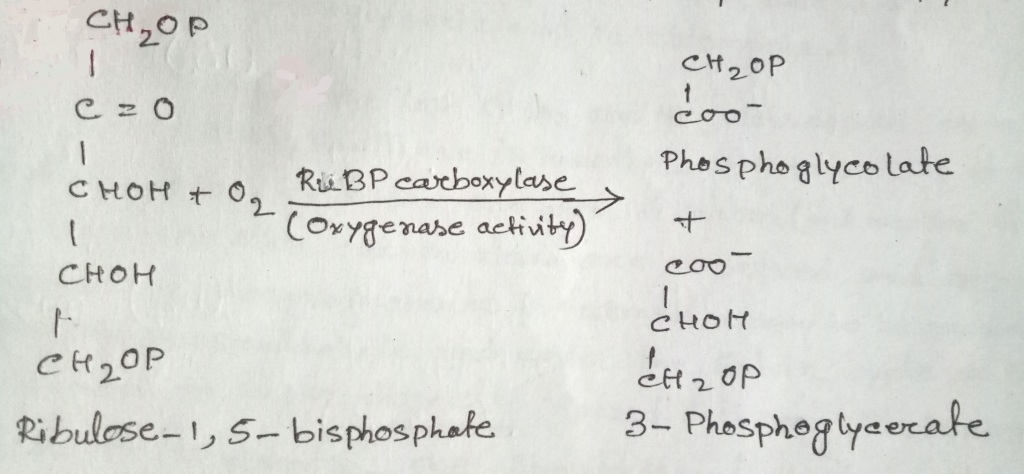Discuss why photorespiration is called "necessary evil"
Since photosynthesis has been evolving for millennia, it might be expected that the development of the machinery of carbon dioxide assimilation may have reached a stage perfection. Yet, one of the great problems in photosynthesis lies with ribulose bisphosphate carboxylase itself, the key enzyme concerned with CO2 fixation. Its catalytic site is such that the enzyme cannot make an absolute distinction between CO2 & O2. Thus, O2 also competes with molecules of CO2 for binding at the catalytic site, & often fragments ribulose bisphosphate into phosphoglycolic acid & Phosphoglyceric acid, instead of two 3-carbon fragments of PGA which should be normally produced. After the discovery of this reaction, the enzyme is now commonly called ribulose bisphosphate carboxylase oxygenase.

Fig: Reaction showing the oxygenase activity of the enzyme RuBP carboxylase
The oxygenase activity is very significant because in nature molecules of O2 are far in excess to those of CO2. Locally, i.e. in the interior of leaf, photosynthesis can lead to accumulation of even higher concentration of O2 than is present in the atmosphere.
According to glycolate metabolism, only the oxygenase activity of the enzyme RuBP carboxylase is shown, which results in the formation of glycolic acid. These molecules move out through the cytoplasm, to organelles called peroxisomes & glyoxysomes which convert glycolate to glyoxylate & then to glycine, which then moves into the mitochondria, where one molecule of serine is formed from two molecules of glycine with the release of a molecule each of CO2 & NH3. The amino acid serine (a 3-carbon compound) then reenters peroxisomes & gets deaminated to form glyceric acid, which is again converted to phosphoglyceric acid in chloroplasts.
At first sight, the loss of CO2 & NH3 does appear as a wasteful process. There is another way to looking at the cycle. At least, by the loss of one atom of carbon (& another of nitrogen), the three other carbon atoms are conserved, & one molecule of phosphoglycerate is formed, ready to be reduced to phosphoglyceraldehyde & enter the Calvin cycle or be converted to sugar directly. Viewed this way, photorespiration is the benefit to plants - one should then look upon it as a "necessary evil".